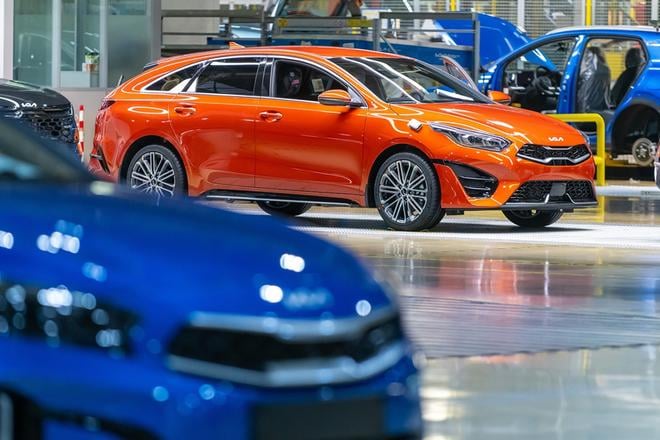Slovakia remains, with some 993,000 cars manufactured in 2024, the global leader in car production per capita. Even though four carmakers active in Slovakia produced fewer vehicles compared to one year ago, the production start of new models was behind the year-on-year drop, presenting sound prospects for a return to a growth in the next years. Nevertheless, the sector faces significant challenges in the form of possible tariffs to be imposed by the US and China, as well as rising costs due public finance consolidation measures. The latter especially makes Slovakia’s automotive sector less competitive compared with neighbouring countries.
“All these factors have a negative effect on the competitiveness and development of Slovakia’s industry, including the automotive one,” Alexander Matušek, president of the Slovak Automotive Industry Association (ZAP), said during the annual press conference on Thursday, January 16.
Drop in car production
Slovakia remains the world leader in vehicle production per capita, with 182 vehicles produced per 1,000 inhabitants in 2024. Car production decreased by almost 90,000 units compared with the previous year. This drop is mostly ascribed to the Slovak arm of Stellantis, which has been changing the portfolio of models produced in its plant in Trnava. Based on car production by other car makers, it manufactured some 150,000 units last year. Volkswagen and Kia Slovakia revealed the exact numbers of vehicles that rolled down from their assembly lines in 2024: 341,111 and 351,270 units, respectively. The Nitra-based Jaguar Land Lover’s production neared its total capacity of 150,000 last year.
The automotive industry, i.e. the production of cars and components, keeps accounting for a high share of total industry revenues, 49.5 percent based on the latest available data from 2023. The automotive sector employed more than 165,000 people, with aggregate employment reaching 244,000. The automotive industry accounted for 9.2 percent of the total GDP.
“These results are mainly due to the fact that in the past we have been an attractive destination for investors and able to offer the best conditions,” said Matušek.
Thanks to this, car makers in Slovakia have won the production of new models from their parent companies. Based on these preconditions, Matušek expects car production in Slovakia to increase in the next three years. Firstly to 1.115 million in 2026 and 2027. The brand new Volvo car plant near Košice, whose launch is planned for 2026, should push production to between 1.12-1.27 million in 2028.
Consolidation package makes Slovakia uncompetitive
Matušek recalls that the automotive industry in Slovakia keeps achieving sound results thanks to investments and the production of models assigned to car plants by their parent companies some years ago and under completely different conditions. As the production period of one car model is six to seven years, the production of current models will start to cease in 2027 and 2028. Thus, car plants have been already negotiating the assignment of new models with their parent companies. However, measures adopted by the Robert Fico government within the public finance consolidation package have made them uncompetitive compared to neighbouring countries.
“One should have a look at the business environment Slovakia offers to investors,” said Matušek. He deems the transaction tax as the most harmful measure out of public finance consolidation measures. “We have the highest corporate tax within the Visegrad Group.”
Up to this, the Robert Fico government did not discuss the public finance consolidation measures, that include increase of the corporate tax to 24 percent, VAT to 23 percent nor the increase of the ceiling for calculation of payroll taxes for above-standard earners, with the sector.
“We need a constructive dialogue with the government and a solution to our demands all the more,” said Matušek, adding that after initial discussions, the government has been turning a deaf ear to the sector and its demands.
The ZAP further highlights that 93 percent of all foreign investment into Slovakia’s industry over the last 15 years arrived from the EU, United Kingdom and USA, based on data of the National Bank of Slovakia.
“However, the current fourth Smer government is increasingly oriented towards Russia,” said Matušek, adding that investment from this country accounted for only 0.003 percent and an even smaller share arrived from China.


 In 2024, Kia Slovakia produced 351,270 cars, the highest number of vehicles produced in the plant's history since production began in 2006. It is also a 0.3 percent increase in production compared to 2023. (source: Courtesy of Kia Slovakia)
In 2024, Kia Slovakia produced 351,270 cars, the highest number of vehicles produced in the plant's history since production began in 2006. It is also a 0.3 percent increase in production compared to 2023. (source: Courtesy of Kia Slovakia)